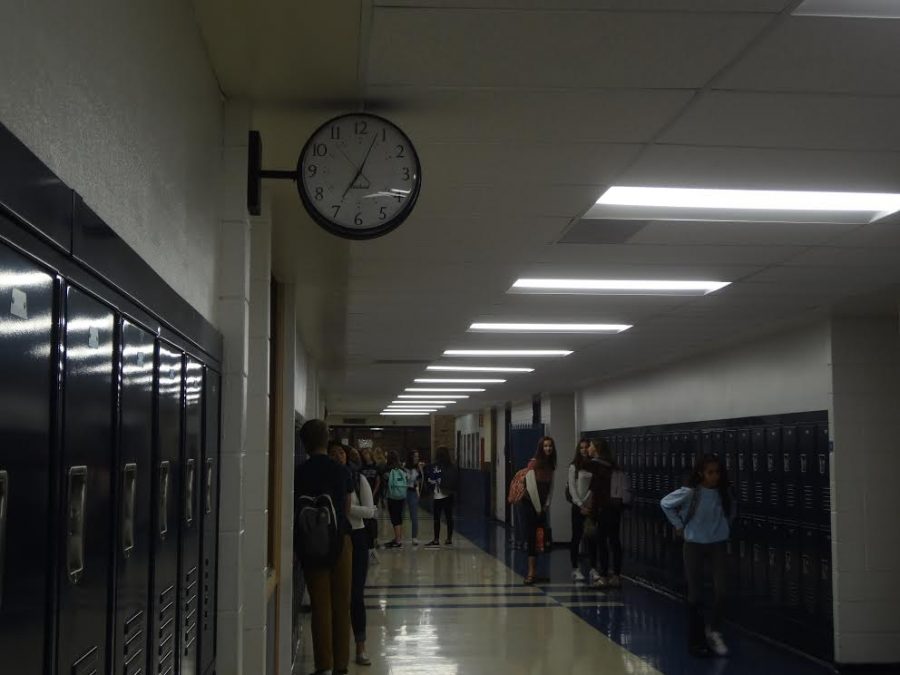Is it time to start school later?
Humans are the only mammals that delay sleep willingly, according to the Cleveland Clinic. And among humans, the constant delay of sleep has become a notable trend among high school students in particular.
Social media is bogged down with jokes about how teens would much rather spend their Friday nights sleeping than partying, yet teenagers average between 7 and 7 ¼ hours of sleep per night, according to Nationwide Children’s, a pediatric hospital and research center.
When those same pediatricians say the necessary amount for people ages 13 to 18 is between 9 and 9 ½ hours, this begs the simple question: why?
“I usually get 5-6 hours of sleep because I’m in a lot of extracurriculars and don’t get the chance to start homework earlier,” senior Maddi Vogel said. Vogel is actively involved in the music department at Cary-Grove. She is a member of Jazz Combo, Jazz Band/Ensemble, Swing Choir Band, Pit Band, and Marching Band. In addition, Vogel is a part of NHS (National Honor Society) and a leader of GSA (Gay Straight Alliance).
Junior Jenna Kiermas said she averages seven hours of sleep a night. Even though she is in cross country and A Cappella choir, she said her lack of sleep is “usually because of homework and AP classes.”
Though many of these sleep-deprived students are involved in multiple extracurricular activities, they see schoolwork as the main culprit in their late hours.
“I don’t sleep enough because I’m a workaholic when it comes to academics, but I try to be well-rested,” Anastazjia Machl said. Machl is a junior who is an active participant in Jazz Ensemble, the Cary-Grove Speech Team, and Science Olympiad.
A more extreme example of a sleep-deprived student is junior Lauren Felleson.
“On average I get 3.5-4.5 hours a day,” Felleson said. She keeps herself busy with NHS volunteer work, Math Team, and Wind Symphony.
Predictably, students involved in extracurricular activities seem to get less sleep. None of the aforementioned Cary-Grove students are hitting even close to the desired nine-hour range.
However, if we promote extracurricular involvement as a key part of the high school experience and college admissions process, it’s unfair to ask these motivated students to cut back. What can be done to alleviate this serious health concern, then? One approach is to change the structure of the school day.
Barrington High School has declared they will implement later start times for the 2017-2018 school year “in response to a growing body of research, as well as comments from parents and students, about the personal and academic benefits of later sleep time for adolescents.”
Currently, the start of a normal day at Barrington High School is 7:20 a.m. and the end is 2:35 p.m. The new times will be from 8:30 a.m. to 3:00 p.m. Not only will they be starting later, but will be shifting from a 7.25 hour day to a 6.5 hour day.
As new information about the sleep-deprivation epidemic and its impact on teens comes out, other high schools may begin to make a change, but Cary-Grove students have mixed feelings about the possibility of later start times and shorter days.
“I would totally be for later start, except it would mess with my work schedule and give me less time to nap and relax before hockey. Oh, and do that little thing called homework,” said junior Jessica Sloat, a member of the Cary-Grove hockey team.
“I think I’d support later start times,” Vogel said. “I always feel more rested when it’s late start, and I don’t think it would be too bad going later in the day to nine 45 minute periods. Although I understand how that might mess up sports, especially during daylight savings time.”
Machl, however, stated that she was against the idea of later start times at Cary-Grove. This was due to the abundance of sports and extracurriculars most of the student body is involved in.
“I’d rather wake up early and not come home after, like, 5:00 p.m.,” she said.
Dr. Corey Tafoya, D155’s assistant superintendent of educational services, confirmed that the matter had been discussed amongst the District Leadership Team. The DLT is composed of the four principals, the superintendent, and the three assistant superintendents.
“Right now we’re just kind of at the idea phase and we’re just trying to figure out what really realistically we can do about it because it’s a big thing to do,” Dr. Tafoya said.
Some concerns that have been raised, according to Dr. Tafoya, are financial (such as the need to purchase more buses) and those surrounding sports. In order for students to make it to games after school that can start as early as 4:00 p.m., it may be necessary for them to miss their ninth-hour class.
“I think a lot of people would say that academics is the primary thing we need to look at and be most concerned about,” Dr. Tafoya said, making that solution unlikely. However, he believes the district should consider to explore a change in the structure of the school day.
“In terms of just what’s best for kids and what’s best for learning, I think that it makes a lot of sense and we should really look at it,” he said. He bases his view on both his experience student teaching at Denver East High School, which starts at 7:05 a.m., and being the principal at Woodstock High School, which starts at 8:20 a.m.
Despite it being a source of conflicting opinions, the push for later high school start times appears to be one of the primary solutions to the sleep-deprivation epidemic. It’s too soon to tell, but one day we Trojans may begin our days later rather than sooner.

